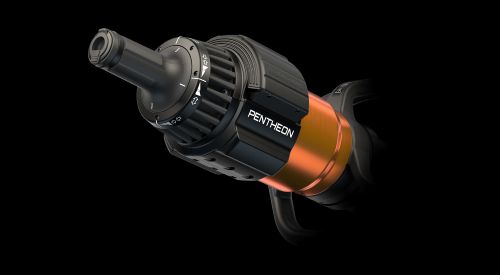- Vefverslun
- Slökkvilið
- Slöngur, barkar ofl.
- Slökkvibifreiðar
- Sýningabifreið frá Rosenbauer
- Slökkvilið Reykjavíkur
- Slökkvilið höfuðborgarsvæðisins 2019
- Slökkvilið höfuðborgarsvæðisins 2024
- Flugmálastjórn
- Isavia Keflavíkurflugvöllur 2014
- Isavia Reykjavíkurflugvöllur 2015
- Isavia Keflavíkurflugvöllur 2018
- Isavia Keflavíkurflugvöllur 2019
- Isavia Minni innanlandsflugvellir 2025
- Íslenska álfélagið
- Brunavarnir Suðurnesja
- Brunavarnir Suðurnesja Vagn
- Brunavarnir Suðurnesja 2019
- Brunavarnir Suðurnesja 2025
- Brunavarnir Suðurnesja 2025
- Slökkvilið Sandgerðisbæjar
- Slökkvilið Ölfus
- Slökkvilið Hveragerðis
- Brunavarnir Árnessýslu
- Brunavarnir Árnessýslu 2005
- Brunavarnir Árnessýslu 2007
- Brunavarnir Árnessýslu 2008
- Brunavarnir Árnessýslu Selfoss 2017
- Brunavarnir Árnessýslu 2024
- Brunavarnir Rangárvallasýslu
- Slökkvilið Hornafjarðar 2024
- Slökkvilið Hornafjarðar 2025
- Slökkvilið Austurbyggðar
- Slökkvilið Fjarðabyggðar
- Slökkvilið Fjarðabyggðar 2024
- Alcoa Fjarðaál
- Slökkvilið Neskaupsstaðar
- Slökkvilið Seyðisfjarðar
- Brunavarnir á Héraði
- Brunavarnir á Héraði 2006
- Slökkvilið Langanesbyggðar
- Slökkvilið Langanesbyggðar 2025
- Slökkvilið Norðurþings 2018
- Slökkvilið Norðurþings 2024
- Slökkvilið Akureyrar
- Slökkvilið Akureyrar 2010
- Slökkvilið Dalvíkur 2024
- Brunavarnir Skagafjarðar
- Brunavarnir Skagafjarðar 2006
- Brunavarnir Skagafjarðar 2019
- Brunavarnir Skagafjarðar 2025
- Slökkvilið Ísafjarðar
- Slökkvilið Ísafjarðarbæjar 2006
- Slökkvilið Ísafjarðarbæjar 2019
- Slökkvilið Ísafjarðarbæjar 2020
- Slökkvilið Borgarbyggðar
- Slökkvilið Borgarbyggðar 2024
- Slökkvilið Snæfellsbæjar
- Slökkvilið Akraness og Hvalfjarðarsveitar 2022
- Slökkvilið Akraness og Hvalfjarðarsveitar 2024
- Tirana flugvöllur í Albaníu 2022
- Gámar og vatnstankar
- Fireco Slökkvibúnaður í bifreiðar
- Firecafs froðuslökkvikerfið í bifreiðar
- Ruberg brunadælur
- Innréttingar og festingar
- Rennihurðir
- Rennihurðir
- Sírenur og aðvörunarljós
- Ljósamöstur
- Handrið á þak
- Myndir
- Storz tengi ofl.
- Úðastútar
- Froðustútar og blandarar
- Slökkvifroður og duft
- Slökkviteppi/yfirbreiðslur
- Hlífðarfatnaður
- Eiturefnafatnaður
- Björgunartæki og verkfæri
- Holmatro björgunartæki
- Holmatro Pentheon
- Holmatro Klippur
- Holmatro Glennur
- Holmatro Tjakkar
- Holmatro Kombitæki
- Holmatro Hleðslutæki og rafhlöður
- Holmatro Björgunartækjasett
- Holmatro Innbrotsverkfæri
- Holmatro Dælur
- Holmatro Vökvaslöngur
- Holmatro Lyftipúðar og tjakkar
- Holmatro Stjórntæki og loftkútar
- Holmatro Loftslöngur
- Holmatro Stoðir
- Holmatro Ýmis aukabúnaður
- Holmatro Sérsveitar búnaður
- Holmatro Iðnaðartæki
- Packexe búnaður
- Cutters Edge og Truckman's Choice sagir
- TwinSaw sagir
- Dafco verkfæri
- Fire Hooks Almenn verkfæri
- Ýmis smáverkfæri
- Brunaaxir
- Nornakústar, klöppur ofl.
- Interspiro Reykköfunartækjabúnaður
- Scott Reykköfunartæki
- Ljós
- Loftpressur (Coltri)
- Dælur
- Búnaður fyrir kjarr og skógarelda
- Blásarar (Blow Hard)
- Blásarar (Ramfan)
- Blásarar (Swefan)
- Brunahanar
- Brunastigar
- Upphreinsiefni
- Fæluskot
- Spilliefnageymslur
- Spilliefnabúnaður
- Vatns og spilliefnalaugar
- Skolsturtur
- Tjöld
- Hitamyndavélar
- Myndir
- Coldcut cobra
- Sjúkrabúnaður
- Slökkvitækjaþjónusta
- Um okkur
- Hafa samband
- Coldcut cobra

